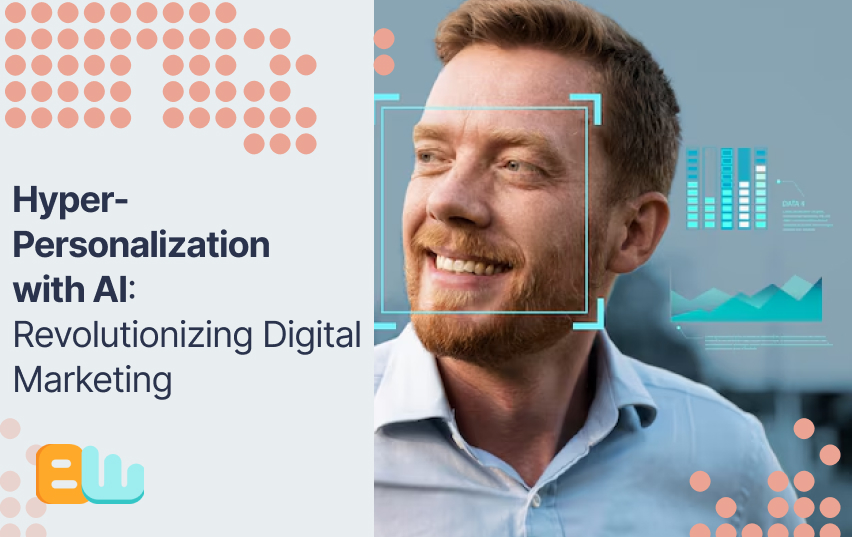
Have you landed on a website that knows exactly what you want? That’s not coincidence—it’s AI-powered hyper-personalization at work.
Today’s consumers don’t just appreciate personalization; they expect it. 80% of customers are more likely to purchase from brands that provide personalized experiences, while companies using advanced personalization report revenue increases of 10-30%.
In this guide, I’ll show you exactly how AI transforms digital marketing through hyper-personalization, with actionable strategies you can immediately implement—even if you’re just starting.
The Evolution of Personalization in Digital Marketing
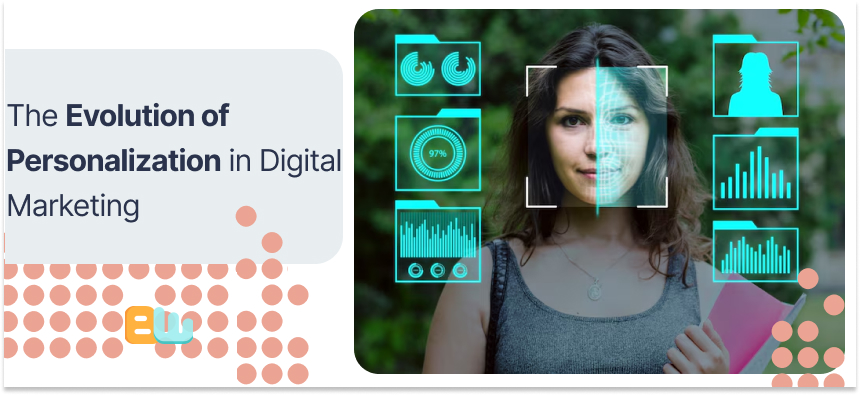
Remember when personalization meant adding a customer’s first name to an email? Those days are long gone.
How Traditional Marketing Segmentation Falls Short Today
Traditional segmentation typically divides customers into broad categories based on demographics or basic behaviors. However, this approach has a significant problem.
Your “millennial female in urban areas” segment still contains thousands of individuals with vastly different preferences, behaviors, and needs. This broad range simply can’t create the relevant experiences today’s consumers demand.
Consider this: 71% of consumers feel frustrated when their shopping experience isn’t personalized. Generic approaches increasingly fall flat in a world where relevance is everything.
The Shift from Basic Personalization to Hyper-Personalization
Essential personalization looks at who customers are. Hyper-personalization examines what they do, how they do it, when, and why they might be doing it.
Rather than simply recommending products based on past purchases, hyper-personalization considers:
– Real-time behavior and browsing patterns
– Contextual information like location, weather, and time of day
– Cross-device interactions
– Emotional drivers behind purchasing decisions
– Predictive elements about future needs
This shift creates marketing that feels less like being sold to and more like receiving helpful assistance exactly when needed.
5 Ways AI Has Transformed Customer Expectations Forever
1. Immediate gratification: Consumers expect brands to recognize and respond instantly to their needs.
2. Contextual relevance: Generic messages are increasingly ignored; communications must consider a customer’s specific situation.
3. Anticipatory service: The best experiences now predict needs before customers articulate them.
4. Seamless omnichannel interactions: People expect consistent personalization across every touchpoint.
5. Invisible technology: The tech powering these experiences should feel natural and unobtrusive.
These expectations have created a marketplace in which hyper-personalization isn’t just a competitive advantage—it’s becoming a matter of survival.
Understanding the Core Technologies Behind AI Personalization
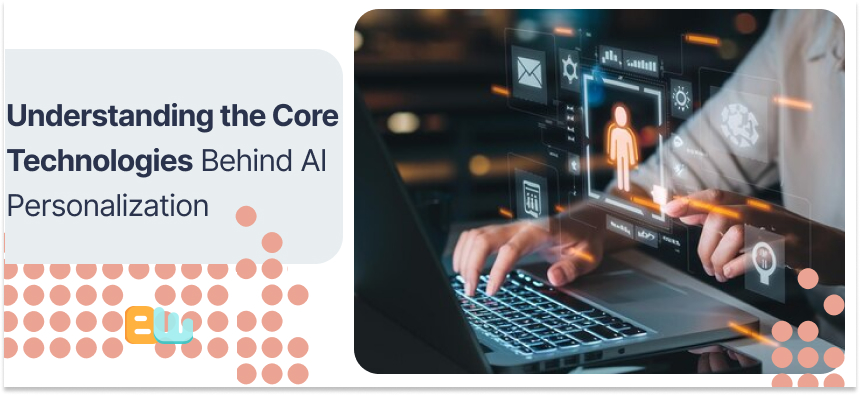
Let’s break down the key technologies that make hyper-personalization possible.
Machine Learning Algorithms That Power Personalized Experiences
Machine learning forms the foundation of AI personalization by identifying patterns in massive datasets that would be impossible for humans to detect.
These algorithms continuously improve as they process more data, making recommendations more accurate. Popular approaches include:
– Collaborative filtering: Recommending items based on what similar customers have liked
– Content-based filtering: Suggesting products with attributes similar to those a customer has shown interest in
– Hybrid approaches: Combining multiple methods for more nuanced recommendations
The most sophisticated systems can analyze thousands of variables simultaneously to deliver the perfect recommendation at the ideal moment.
Natural Language Processing for Customer Intent Analysis
NLP helps marketers understand what customers are saying and what they mean.
By analyzing search queries, social media posts, reviews, and customer service interactions, NLP can:
– Detect sentiment (positive, negative, neutral)
– Identify specific pain points and desires
– Recognize buying signals and intent
– Extract key topics customers care about
This technology enables personalized content creation at scale by identifying precisely what information will be most valuable to each customer.
Predictive Analytics: Anticipating Customer Needs Before They Do
Predictive analytics uses historical data to forecast future behavior, allowing marketers to:
– Identify which customers are most likely to purchase specific products
– Determine optimal times to reach out to different segments
– Predict customer lifetime value to focus resources on high-value relationships
– Anticipate and prevent customer churn before it happens
The best systems can even predict when customers need a replacement product or service before they realize it themselves.
Computer Vision and Its Role in Personalized Marketing
Computer vision—AI that can “see” and interpret visual information—is creating entirely new personalization opportunities:
– Visual search that allows customers to find products by uploading images
– Augmented reality experiences that show how products will look in a customer’s home
– Facial recognition for personalized in-store experiences
– Analysis of user-generated visual content to understand how products are being used
These technologies create more intuitive and frictionless customer experiences that feel magical rather than mechanical.
7 Powerful Benefits of AI-Driven Hyper-Personalization
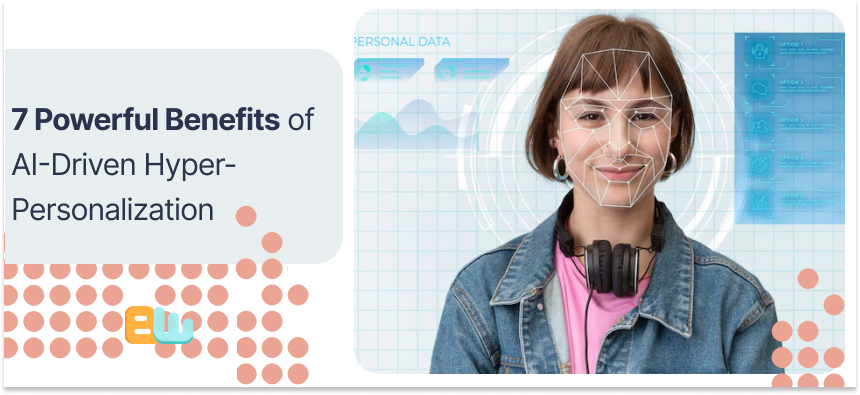
The advantages of implementing AI personalization are beyond what you imagine. Here’s what you can expect:
Dramatically Increased Conversion Rates Through Relevance
When customers receive offers tailored specifically to their needs, conversion rates skyrocket.
Research from McKinsey shows personalized recommendations can drive a 10-15% increase in conversion rates. Brands like Amazon attribute up to 35% of their revenue to their recommendation engine.
The key is reducing decision fatigue by showing customers the right options at the right time, making the path to purchase feel effortless.
Creating Emotionally Resonant Customer Experiences at Scale
AI personalization creates emotional connections by making customers feel understood.
The relationship transcends transactions when a brand consistently demonstrates it understands your preferences, challenges, and goals. This emotional resonance is now achievable at scale through sophisticated AI that considers psychological factors alongside behavioral data.
The result? Customers who feel a genuine connection to your brand rather than being treated as data points.
How Personalization Reduces Customer Acquisition Costs
Acquiring new customers typically costs 5-25 times more than retaining existing ones. Hyper-personalization helps on both fronts:
– More targeted acquisition efforts reduce wasted ad spend
– Higher conversion rates from personalized campaigns lower cost-per-acquisition
– Improved customer experience increases retention and lifetime value
– Personalized win-back campaigns recapture formerly lost customers
Companies implementing advanced personalization often see 20-30% reductions in marketing spend while achieving better results.
Building Stronger Brand Loyalty with Tailored Interactions
When every interaction feels custom-designed, loyalty naturally follows.
Accenture found 91% of consumers are more likely to shop with brands that provide relevant offers and recommendations. More importantly, these personalized experiences create habit loops that make your brand the default choice.
By consistently delivering value tailored to individual needs, you transform occasional buyers into brand advocates who wouldn’t dream of switching to competitors.
Implementing Hyper-Personalization: A Strategic Framework
Ready to implement hyper-personalization? Here’s a practical framework to get started:
Essential Data Collection Methods for Effective Personalization
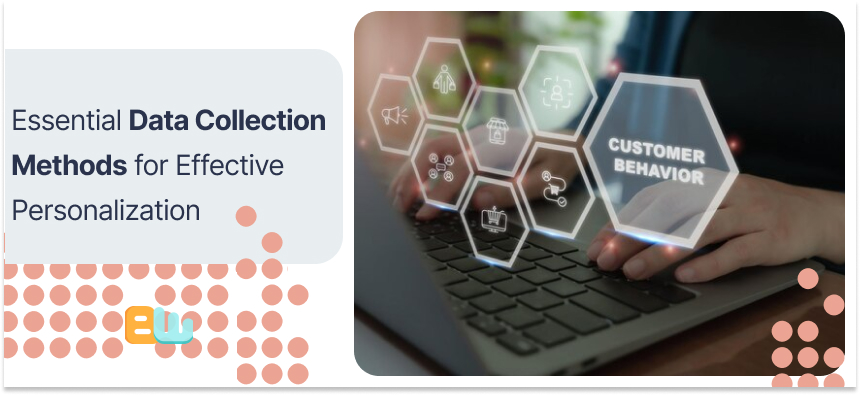
Effective personalization begins with quality data from multiple sources:
– First-party data: Information collected directly from your customers (website behavior, purchase history, survey responses)
– Second-party data: Data acquired through partnerships
– Third-party data: Information purchased from external providers to fill gaps
Create a unified customer data platform (CDP) that consolidates information from:
– Website and app interactions
– CRM systems
– Email engagement metrics
– Social media activities
– Purchase history
– Customer service interactions
– Loyalty program data
Remember: more data isn’t always better. Focus on collecting information that directly improves the customer experience rather than gathering data for its own sake.
Selecting the Right AI Tools for Your Marketing Objectives
The AI personalization landscape is vast. Match tools to your specific goals:
– For content personalization: Consider platforms like Optimizely, Dynamic Yield, or Adobe Target
– For email marketing: Look at Klaviyo, Sailthru, or Braze
– For e-commerce recommendations: Explore solutions like Nosto, Bloomreach, or Algolia
– For advertising personalization: Consider Albert AI, Persado, or Pattern89
– For comprehensive solutions: Larger platforms like Salesforce Einstein or Adobe Sensei offer wider capabilities
Start with one channel where personalization will have the most significant impact, perfect your approach, then expand to other touchpoints.
Balancing Automation and Human Oversight in Campaigns
While AI excels at processing data and making recommendations, human oversight remains crucial for:
– Ensuring brand voice consistency
– Providing creative direction
– Making ethical judgments
– Interpreting complex emotional contexts
– Identifying edge cases where AI might produce inappropriate results
The most effective approach is “human-in-the-loop” AI, where algorithms handle data-intensive tasks while humans provide guidance, review outputs, and make final decisions on sensitive matters.
How to Measure ROI of Your Personalization Initiatives
To demonstrate value, track these key metrics before and after implementation:
Short-term metrics:
– Conversion rate
– Average order value
– Click-through rate
– Time spent on site
– Cart abandonment rate
Long-term metrics:
– Customer lifetime value
– Retention rate
– Net Promoter Score
– Share of wallet
– Customer acquisition cost
Set up controlled A/B tests comparing personalized experiences against non-personalized ones to isolate the impact of your initiatives.
Real-World Success Stories: AI Personalization in Action
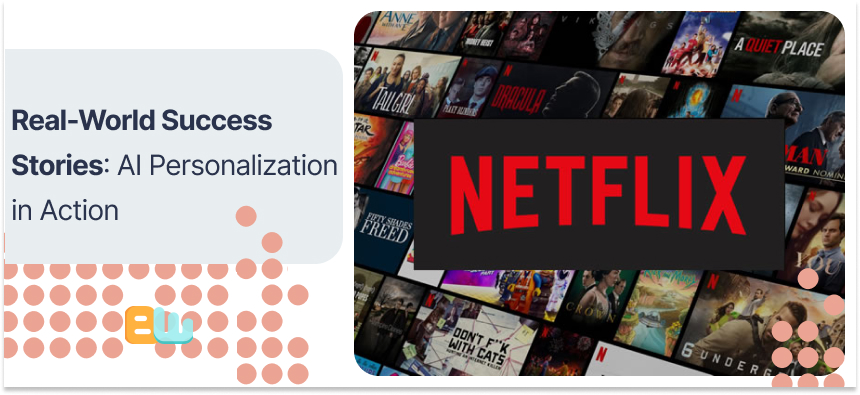
Let’s examine how leading companies use AI personalization to drive remarkable results.
Case Study: How Netflix Revolutionized Content Recommendations
Netflix’s recommendation system is perhaps the most famous example of successful AI personalization:
– The platform analyzes over 100 million data points daily
– More than 80% of content watched on Netflix comes from recommendations
– Their algorithm considers not just what you watch, but when, for how long, on what devices, and much more
– Even the artwork displayed for each title is personalized based on your viewing history
The result? Netflix saves an estimated $1 billion annually from reduced churn by keeping subscribers engaged with perfectly tailored content suggestions.
How Amazon Leverages AI for Individual Shopping Experiences
Amazon’s personalization strategy goes far beyond “customers who bought this also bought”:
– Their recommendation engine drives 35% of all sales
– Dynamic pricing algorithms adjust thousands of prices throughout the day
– Personalized email campaigns achieve 29% higher open rates than generic ones
– Their “anticipatory shipping” system predicts what you’ll order before you order it
Amazon’s personalization efforts extend to every aspect of the customer journey, from search results to checkout to post-purchase support.
B2B Transformation: Personalization Beyond Consumer Markets
B2B companies are now adopting hyper-personalization with impressive results:
Salesforce implemented AI-driven account-based marketing that:
– Personalizes content based on a company’s industry, size, and stage in the buying cycle
– Predicts which accounts are most likely to convert
– Suggests optimal timing for sales outreach
– Results: 25% increase in qualified leads and 30% reduction in sales cycle length
IBM uses AI to personalize their resource center, delivering custom content packages to visitors based on their role, industry, and behavior patterns, increasing engagement by 300%.
Small Business Success with Affordable AI Personalization Tools
You don’t need enterprise resources to use effective personalization:
Sephora’s Color IQ system helps customers find their perfect foundation shade through computer vision analysis, driving a 15% increase in foundation sales.
The Farmer’s Dog, a DTC pet food company, uses AI to create personalized feeding plans based on detailed surveys about each customer’s dog. It has achieved 40-50% customer retention rates in an industry where 20% is considered good.
Even small businesses can implement cost-effective solutions like:
– Klaviyo’s predictive analytics for email marketing
– Nosto’s automated product recommendations
– Zoho’s AI-powered CRM personalization
Navigating Ethical Considerations in AI Marketing
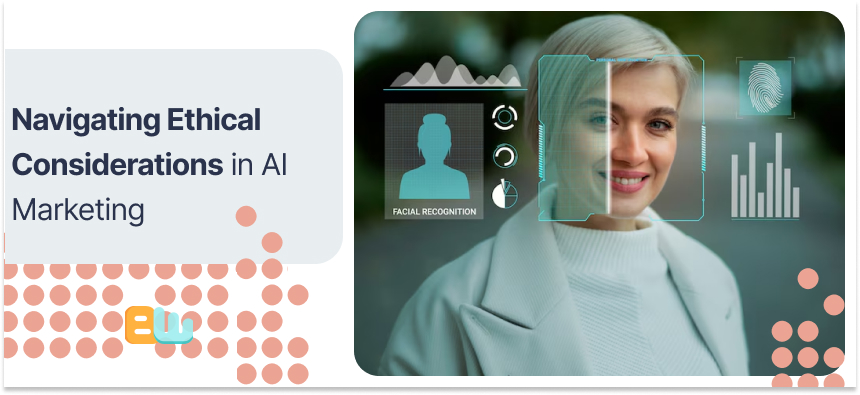
With great power comes great responsibility. Here’s how to personalize ethically:
Addressing Privacy Concerns While Maintaining Personalization
Customers want personalization but not at the expense of privacy. To balance these needs:
– Adopt a zero-party data strategy where customers voluntarily share information in exchange for better experiences
– Communicate how customer data will be used in plain, accessible language
– Provide granular privacy controls so customers can choose what data they share
– Use anonymized and aggregated data when possible
– Focus on contextual personalization rather than solely identity-based approaches
Remember that trust, once broken, is extremely difficult to rebuild. Prioritize transparency over short-term marketing gains.
Creating Transparent AI Systems That Build Trust
Transparency isn’t just ethical—it’s good business:
– Explain to customers how and why recommendations are made
– Make it clear when they’re interacting with AI versus humans
– Provide rationales for personalized offers (“We’re recommending this based on…”)
– Create easy pathways for customers to correct the system when it makes mistakes
– Document your AI practices in accessible terms
Customers who understand how personalization works are more likely to view it as helpful rather than intrusive.
Avoiding the “Creepy Factor” in Hyper-Personalized Marketing
There’s a fine line between helpful and unsettling. To stay on the right side:
– Just because you have data doesn’t mean you should use it
– Introduce personalization gradually rather than all at once
– Focus on solving customer problems rather than showcasing your data capabilities
– Test personalization approaches with diverse focus groups before wide deployment
– Be especially cautious with sensitive categories (health, financial difficulties, family issues)
A good rule of thumb is reconsidering your approach if explaining how you knew something would make a customer uncomfortable.
Compliance with Evolving Data Protection Regulations
Stay ahead of regulatory requirements by:
– Building privacy compliance into your systems from the ground up
– Maintaining detailed documentation of data processing activities
– Implementing strong data governance practices with clear accountability
– Regularly conducting privacy impact assessments for new personalization initiatives
– Staying current with evolving regulations like GDPR, CCPA/CPRA, and emerging state laws
View compliance not as a burden but as an opportunity to demonstrate your commitment to responsible data practices.
The Future of Hyper-Personalization: Emerging Trends
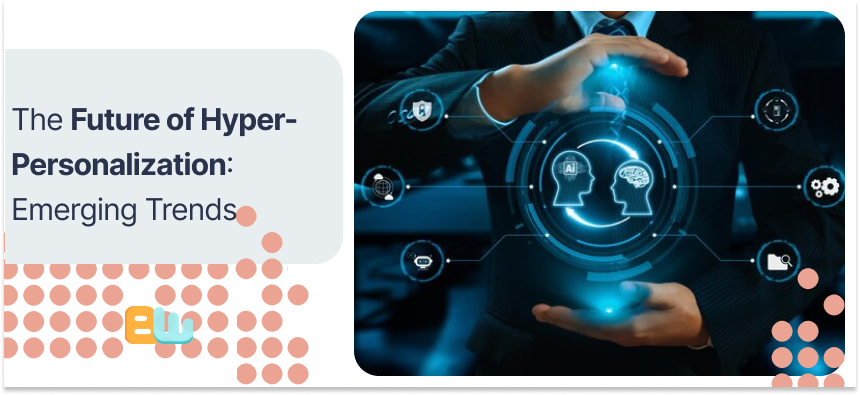
What’s next in the personalization revolution? These emerging trends will shape the landscape:
Voice and Visual Search Optimization for Personal Experiences
By 2025, an estimated 75% of U.S. households will have smart speakers. Visual search is growing at 30% annually. To prepare:
– Optimize content for conversational queries rather than keywords
– Structure data to provide direct answers to specific questions
– Create visual content that’s easily identifiable by computer vision algorithms
– Develop personalization strategies specific to voice and visual interfaces
These modalities create new opportunities for hyper-contextual personalization based on immediate needs.
Emotional AI: Understanding and Responding to Customer Feelings
Advanced AI can now detect and respond to emotional states through:
– Sentiment analysis of text communications
– Voice tone analysis in customer service calls
– Facial expression recognition in physical locations
– Behavioral patterns that suggest emotional states
This emotional intelligence allows brands to adapt to what customers want and how they feel about it, creating genuinely empathetic digital experiences.
Omnichannel Personalization: Creating Seamless Customer Journeys
The future belongs to brands that deliver consistent personalization across all touchpoints:
– Real-time synchronization of customer data across channels
– Persistent personalization that follows customers from device to device
– Contextual awareness that considers physical location and environment
– Handoffs between digital and human interactions that preserve context
The goal is a single conversation across multiple channels rather than siloed experiences that force customers to start over.
What Marketers Should Prepare for in the Next 5 Years
To stay ahead of the curve:
1. Prepare for a cookieless future by building first-party data strategies now
2. Explore federated learning approaches that maintain privacy while enabling personalization
3. Invest in augmented intelligence systems that enhance human capabilities rather than replace them
4. Develop ethical frameworks for emerging technologies before deployment
5. Build interdisciplinary teams combining marketing, data science, and ethics expertise
The most successful organizations will view AI not as a technology initiative but as a fundamental transformation in understanding and serving customers.
Practical Steps to Start Your AI Personalization Journey
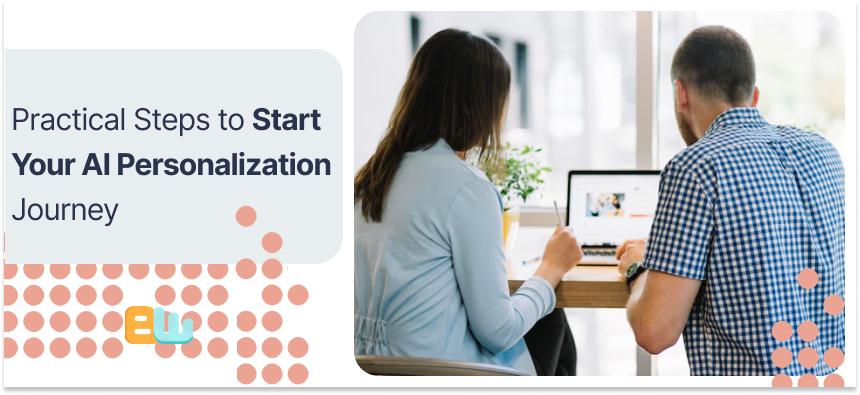
Ready to begin? Here’s your roadmap:
Conducting a Personalization Readiness Assessment Today
Before investing in technology, assess your organization’s readiness:
1. Data foundation: Do you have clean, unified customer data? If not, start here.
2. Technical capabilities: What systems do you already have that could support personalization?
3. Team skills: Do you have the necessary data science and AI implementation expertise?
4. Content flexibility: Can you create modular content that works in personalized contexts?
5. Measurement infrastructure: Can you accurately track personalization performance?
Address gaps in these areas before moving forward with implementation.
Building Your First AI-Powered Marketing Campaign
Start small, learn fast:
1. Choose a specific business problem with measurable value (e.g., reducing cart abandonment)
2. Select one channel for your initial efforts (email often provides the quickest wins)
3. Define clear success metrics before launching
4. Start with simple segmentation before advancing to true 1:1 personalization
5. A/B test against non-personalized control groups to prove value
6. Document learnings systematically to inform future initiatives
A focused approach allows you to demonstrate quick wins while building organizational capabilities.
Tools and Resources for Marketers New to AI
For those just starting:
Learning resources:
– Google’s Machine Learning Crash Course (free)
– CourseRA’s AI For Everyone by Andrew Ng
– HubSpot Academy’s Artificial Intelligence in Marketing certification
Beginner-friendly tools:
– Mailchimp’s Customer Journey Builder
– Shopify’s Product Recommendation API
– Google Optimize for website personalization
– Canva’s Magic Write for personalized content creation
These resources provide accessible entry points without requiring extensive technical knowledge.
How to Scale Your Personalization Efforts Gradually
As you gain confidence:
1. Build a center of excellence to share learnings across teams
2. Create a personalization roadmap with clear milestones
3. Implement a test-and-learn methodology with regular review cycles
4. Gradually expand to additional channels as you master each one
5. Invest in AI explainability tools to understand why the system makes specific recommendations
6. Develop an automation operating model that clearly defines human vs. AI responsibilities
The most successful organizations view personalization as a continuous journey rather than a destination.
Embracing the Hyper-Personalized Future
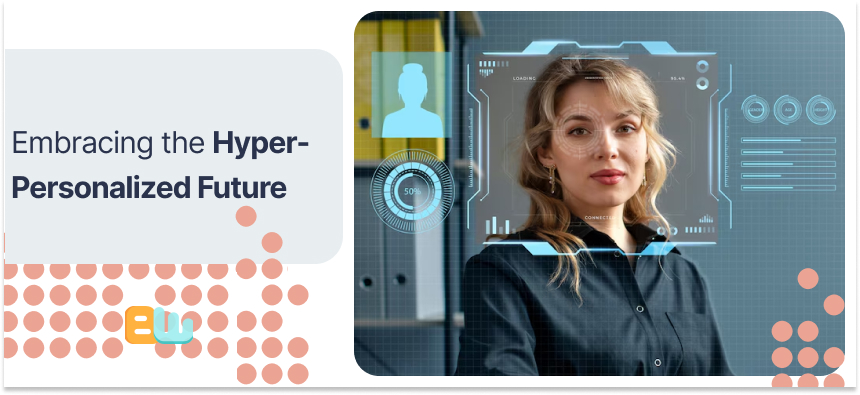
AI-powered hyper-personalization isn’t just changing marketing tactics—it’s fundamentally transforming how brands build customer relationships.
The most successful companies will use these technologies not to manipulate but to genuinely understand and serve customer needs better than ever before.
The good news is that you don’t need to transform everything overnight. Start with the practical steps outlined in this guide, focus on solving real customer problems, and gradually build your capabilities.
Remember that technology alone isn’t enough—true personalization requires a deep commitment to understanding your customers as individuals with unique needs, preferences, and contexts.
The future belongs to brands that make every customer feel like the only customer. The tools to create that future are available today.
What step will you take first?
